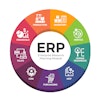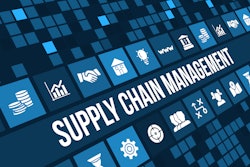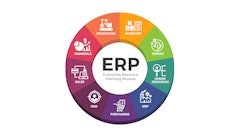
The headlines make it sound simple: tariffs increase, companies switch suppliers, business continues. But the reality facing procurement leaders today is far more complex. As global trade policies shift with unprecedented frequency, the strategic response extends well beyond traditional supply chain management into the realm of contract management, cross-functional collaboration, and data-driven decision making.
Most businesses have already begun identifying alternate suppliers to mitigate potential disruptions, recognizing the critical importance of supply chain flexibility. However, the strategic decision to shift supply bases from regions experiencing abrupt cost changes due to tariffs reveals layers of complexity that demand sophisticated responses.
The reality of supply chain transformation
The implementation of strategic supply chain shifts is incredibly complicated and time-consuming. Companies cannot simply flip a switch to manufacture or source raw materials from a different location—these transitions may take years to fully execute. Moreover, existing commitments with current suppliers create additional complexity, with both parties having established contractual obligations that cannot be easily dissolved.
This reality has fundamentally changed how procurement teams approach supply chain resilience. Rather than viewing supplier relationships as transactional arrangements that can be quickly modified, leading organizations now understand that sustainable supply chain adaptation requires a comprehensive approach that combines legal strategy, financial planning, and relationship management.
The multi-dimensional decision framework
Companies must balance multiple considerations beyond simple cost calculations. The decision involves evaluating current market conditions, competitive landscape, and potential long-term implications of each strategic approach.
Key factors include customer price sensitivity, potential market share implications, and the ability to maintain profitability while considering downstream effects on the entire supply chain ecosystem. Financial considerations also remain paramount—companies must assess capital investment requirements for supplier network restructuring, costs of absorbing increases, and market tolerance for price adjustments.
A multi-pronged approach is most effective: combine elements of cost absorption, selective price adjustments, and strategic supplier network restructuring. This requires detailed analysis of financial instruments, dynamic pricing provisions, and alternative cost mitigation strategies that extend far beyond traditional procurement practices.
Data-first contracting as strategic infrastructure
As global organizations contend with escalating trade tensions and regulatory uncertainty, contract lifecycle management (CLM) has emerged as critical infrastructure for navigating complex supply chain disruptions. The ability to quickly analyze and modify contracts becomes paramount when importers are rapidly repricing, seeking price protections from vendors, and adapting to increased consumer costs.
Technology's effectiveness depends entirely on data quality and integration. If contract data is blended with other business data—including vendor risk and resilience information, or revenue recognition rules—the exercise of performing scenario analysis becomes significantly more manageable. This capability enables companies to determine potential cost or revenue impacts of trade policy changes while informing strategic discussions throughout the supply chain.
Companies with cleansed and connected data foundations gain substantial advantages in leveraging technology and analytics to support rapid response strategies. The integration enables sophisticated modeling that considers not just immediate financial impacts, but also relationship dynamics, compliance requirements, and long-term positioning.
Strategic imperatives for procurement leaders
Legal foundation audit: Conduct a systematic analysis of current agreements to identify protective mechanisms, extraordinary circumstance provisions, and modification pathways. Map out pricing flexibility clauses and establish frameworks for deploying financial tools when market conditions shift dramatically.
Multi-regional sourcing networks: Build diversified supplier ecosystems designed for agility, especially when policy landscapes change. This requires establishing backup partnerships across various geographies while strengthening core supplier relationships through collaborative planning.
Scenario-based impact modeling: Execute comprehensive forward-looking analysis combining financial projections with operational disruption assessments. This multi-variable modeling should encompass ripple effects across contractual commitments and broader supply network performance.
Partnership-first strategy: Prioritize collaborative engagement with suppliers and customers, treating challenges as shared problems (because they are) requiring joint solutions (because they do). Transform traditional adversarial procurement dynamics into alliance-building opportunities that create value for all parties.
Intelligence-driven operations: Deploy sophisticated contract management platforms and predictive analytics systems that deliver actionable insights for real-time policy response. These technological capabilities must integrate seamlessly with broader business intelligence to enable rapid decision-making.
Learnings from strategic adaptation
While many companies react to tariff pressures with single-dimension responses—shifting production locations or adjusting pricing—some organizations demonstrate how multi-layered strategies can transform disruption into competitive advantage. The approach to navigating trade policy volatility showcased how integrated operational, financial, and consumer-focused strategies can deliver resilience that extends well beyond traditional supply chain adjustments.
Some companies implement a comprehensive strategy that includes domestic manufacturing shifts, product reformulation to reduce imported raw material dependencies, and contract renegotiations. That said, it’s about the deliberate focus on maintaining affordability for everyday consumer goods, adjusting pricing on premium product lines while protecting essential items that impact millions of households.
By collaborating closely with distribution partners to optimize inventory management and creating mutually beneficial contractual scenarios, prioritizing holistic supply chain resilience improves both corporate financial health and consumer economic well-being.
Beyond contractual compliance
The most transformative approach requires thinking beyond traditional contract management. While legal documentation remains essential, supplier relationships fundamentally depend on trust, personal connections, and shared success models. Companies should first ask: "What will the impact be on our suppliers and customers?"
By approaching tariff and trade policy changes with genuine empathy and focus on mutual benefit, businesses can initiate more meaningful and productive dialogues. This perspective transforms potential adversarial negotiations into collaborative problem-solving sessions that strengthen long-term partnerships while addressing immediate operational challenges.
The intersection of data first contracting, relationship management, and strategic planning represents the new frontier in supply chain resilience. Organizations that master this integration will not only navigate current trade policy volatility but position themselves for sustained competitive advantage in an increasingly complex global marketplace.














